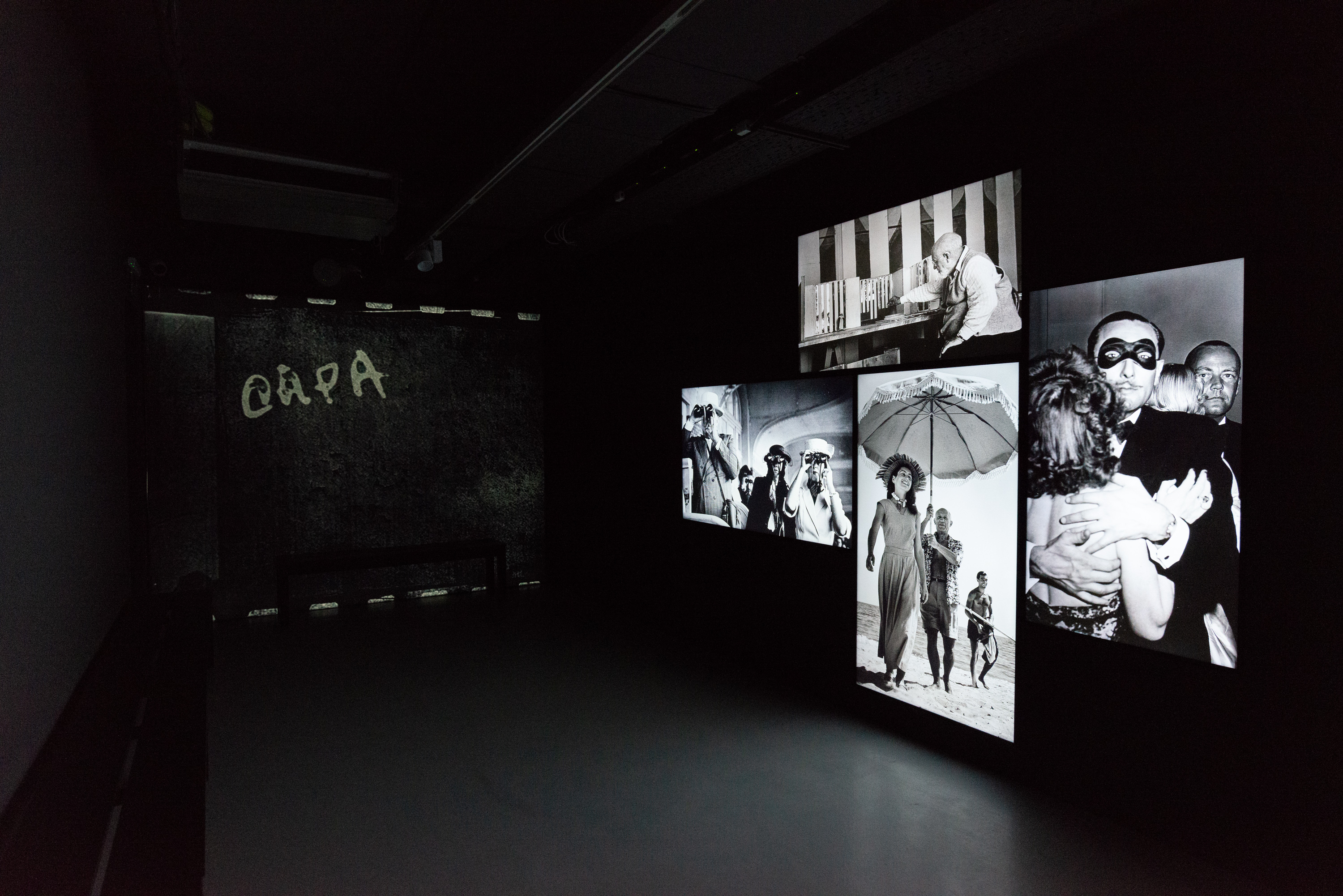World’s 1st Permanent Capa Exhibition Opens

Although much more famous for his war photography, it was far from Robert Capa’s only interest.
Photo by Imre Kiss / Capa Center.
In June of this year, the world’s first permanent exhibition of the legendary war photographer’s work opened in the new exhibition space at the Robert Capa Center just off Király utca in Budapest.
Born Endre Friedmann in Budapest 110 years ago in October of this year, Capa got his name from his schoolboy nickname of “cápa,” Hungarian for shark.
As a teenager, Capa became part of a group of student activists, which brought him to the attention of the Hungarian police, who believed he had communist sympathies. He was beaten but released and left for Paris soon after that, aged just 18.
Friedmann adopted his nickname as his professional name because it sounded American, rather like the name of U.S. film director Frank Capra. There’s also something shark-like about Capa’s hunger to get the shot at all costs.
He believed photographs could tell stories. He claimed he became a photographer because “it was the nearest thing to journalism for anyone who found himself without a language.”
While a visit to the new permanent exhibition undoubtedly reveals the diversity of Capa’s work, he’s best known for redefining war journalism. He’s quoted as having said, “If your photographs aren’t good enough, you’re not close enough.”
In his war photography, Capa used a small, lightweight Leica 35MM camera that enabled him to shoot many rolls of film quickly. This did allow him to get close to his subjects and the action and show the effects of sudden, devastating violence.
Fame in Spain
His best-known photograph, “Loyalist Militiaman at the Moment of Death,” taken in 1936 when Capa was covering the Spanish Civil War, certainly proves he could get close enough.
Controversially, some commentators argue that, by having the loyalist militiaman pose for a picture, Capa was responsible for his death. A Japanese journalist named Kotaro Sawaki has claimed that it was Capa’s girlfriend, Gerda Taro, who took the shot. She was killed in the war in 1937. The photo’s publication in “Life” magazine made Capa famous.
Capa was embedded with the Allies throughout World War II, the only “enemy alien” allowed this privilege. He would document WWII until D-Day in June 1944, when he landed in Normandy with the American troops.
During the war, Capa began an affair with actress Ingrid Bergman. This led to him taking photos of her on the set of Alfred Hitchcock’s 1946 picture “Notorious.” He would go on to shoot many of the great artists of the second half of the 20th century, including Picasso, John Steinbeck, and Henri Matisse.
Capa was killed in 1954 when he stepped on a landmine while accompanying a French regiment fighting in the First Indochina War in Vietnam. He was 41.
The curator of the exhibition is Gabriella Csizek. She began her career working at the Hungarian Museum of Photography on a scholarship in the last years of her university studies. After graduating, she worked at the Mai Manó Haz in Budapest. Before the Capa Center, she worked as an independent curator.
In 2008, the Hungarian government purchased a collection of 937 enlargements and 48 vintage prints by Capa, making Budapest one of the most important custodians of his legacy, along with New York and Tokyo. These 937 images, better known to some as the Master’s Set III, were selected from almost 70,000 negatives by Capa’s brother Cornell and photography historian Richard Whelan, who decided that only three sets of enlargements at the exhibition size could be made from the negatives.
It was agreed that the collection should be permanently housed in Budapest. This led to the Capa Center opening in 2013, tasked with promoting the collection.
First to Last
“The exhibition presents around 138 photographs,” Csizek told me, “from Capa’s first commissioned photograph, of Trotsky making a speech, to his last shot in the First Indochina War and includes many that have become iconic. It explores Capa’s life via a series of themes as well as recording many important world events as they happened.”
In 1974, Cornell Capa started working tirelessly to preserve and promote his brother’s reputation. He began by founding the International Center of Photography (ICP) in New York, which maintains and researches the photographer’s legacy and is also a world-leading institution dedicated to photography and visual culture.
The younger Capa brother, who died in 2008 aged 90, was also a photographer and had a checkered career traveling the globe. Among other things, he shot covers for “Life” magazine.
For Csizek, Robert Capa is important because “He photographed war from the middle of the action. He was a sensitive, passionate, generous, courageous and idealistic man who was there with the soldiers, documenting events with compassion. It was this proximity that redefined war photography and influenced the work of subsequent war photographers. Capa’s ethical principles and dedication also helped shape the profession of photojournalism.”
Capa also believed that “the universal language of photography could bring about change and make the world a better place. He saw what others couldn’t and was able to observe and think from a different perspective that enabled people who viewed his images to redefine how they saw events,” she adds.
As the exhibition website explains, “His never-failing empathy and humanism defined his every activity. He was, in Henri Cartier-Bresson’s words, one of the ‘ethical adventurers,’ and the moral position of his images is an example to all […]. He showed the generations that followed him the power of images built on deep humanism.”
Today, when we are constantly bombarded with images of suffering people caught up in wars or other disasters via our screens, we should remind ourselves that photographic images are not just things to be mindlessly consumed. A visit to the Robert Capa Center is an excellent place to start.
www.robertcapaexhibition.capacenter.hu/en
This article was first published in the Budapest Business Journal print issue of July 28, 2023.
SUPPORT THE BUDAPEST BUSINESS JOURNAL
Producing journalism that is worthy of the name is a costly business. For 27 years, the publishers, editors and reporters of the Budapest Business Journal have striven to bring you business news that works, information that you can trust, that is factual, accurate and presented without fear or favor.
Newspaper organizations across the globe have struggled to find a business model that allows them to continue to excel, without compromising their ability to perform. Most recently, some have experimented with the idea of involving their most important stakeholders, their readers.
We would like to offer that same opportunity to our readers. We would like to invite you to help us deliver the quality business journalism you require. Hit our Support the BBJ button and you can choose the how much and how often you send us your contributions.








